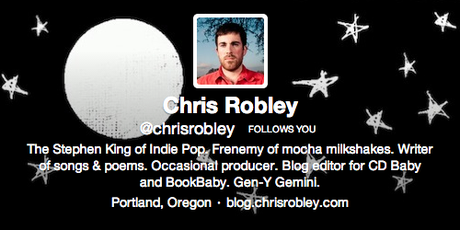 First impressions count. Whether you’re meeting someone for the first time in person, online, or speaking on the phone, those first few seconds are crucial. As a musician, it is so important to make a good first impression – especially when there are so many other artists competing within the same space for people’s attention.
First impressions count. Whether you’re meeting someone for the first time in person, online, or speaking on the phone, those first few seconds are crucial. As a musician, it is so important to make a good first impression – especially when there are so many other artists competing within the same space for people’s attention.
Of course, the quality of your music is still the most important thing – but you need to give someone a reason to actually want to click that link, or to hit play on your latest track. If you create a bad, confusing or impactless first impression, that hit song you’re so proud of might never be heard by someone who would buy it.
In this post, I want to discuss why it’s important to have a Twitter bio that actually tells people who you are, and puts your message across.
Why Should I Have A Descriptive Twitter Bio?

Believe it or not, I have come across a lot of Twitter bios where it’s unclear what the person does. For your average Twitter user, this doesn’t really matter. However, if you’re using Twitter as an vehicle for promoting your music and gaining new fans, then it’s definitely something you need to pay attention to!
Don’t leave things to chance, and don’t make people guess what you do. Make it obvious!
Okay, so now you’ve mentioned that you’re a musician. That’s a good start…but it’s not enough. What genre of music do you play? What artists are you similar to? Go into a little bit of detail. Do you have an album out? Are you touring? Keep your bio up to date, relevant and above all, informative.
“But I only have 160 characters…”
Yes, this is true. It can be difficult to write a good bio using only 160 characters. But it’s possible! Try writing a bullet point list with the points that you want to cover as a starting point. What do you want to mention? Start with a few points and see what you can fit in. Take this (completely fictional) example as a guide:
- I’m a musician who plays folk with a pop-rock twist
- I’ve got a quirky style
- I’m currently touring the US
- Sounds like Ed Sheeran
- I’ve supported Taylor Swift
- Debut album is out now
That information would work as a bio, but it’s not written in an interesting or engaging way. However, when you change it to…
“Quirky folk musician with pop-rock influences. Compared to Ed Sheeran. Currently touring the US, supporting Taylor Swift. Debut album out now!”
…it becomes more readable. Sure, it’s not the best example – but it gets the message across….and you have 18 characters left to spare! Once you’ve got the basics down, you can inject more of your personality and individuality into it.
Play around with the formatting, and see what sounds right. Change it up whenever you have something new that you want to feature. For example, once your tour ends, remove that and replace it with another comparison, or another fact about you that you think will appeal to your target audience.
The Power of the Hashtag

Perfect! Add some hashtags to improve your appearance in searches.
Standard tags like #musician and #music will work, but dive a little deeper and include more niche tags like #folkmusic for more targeted results. Avoid things like #teamfollowback as these are quite spammy in nature.
As a general rule, the more niche and targeted you can be, the better.
Where Can I Find You?
Some people like to put in “quirky” locations – personally, I would advise including a real location. If you don’t want to be as specific as naming the town or city you live in, at least put the general area or state that you’re in. This will help if people are looking for musicians locally, or within a certain geographic area. Plus, it’s nice to know where an artist is located (especially when it comes to catching a live show).
Make sure you include your website address when you’re completing your Twitter bio. Don’t put this in the bio section, but include it as your Web address. Your Facebook/YouTube/Soundcloud is not your website. These are great platforms, but they shouldn’t be your primary web presence.
If someone on Twitter has to ask you where your website is, then you’re giving them an extra hurdle to jump over. Given the opportunity, you should put your website anywhere that you can. I’ve seen this happen quite a lot recently, and it’s so easily avoided!
Examples of Good Twitter Bios
Below are some examples of what I would consider to be good Twitter bios. These tell people what the artists are about, and also showcase some personality. Ideally, you should try and find a balance between simply static factual information and showcasing who you are personally – after all, Twitter is all about people communicating with other people!


Rowen Bridler – @rowenmusic

What do you think?
Are there any musicians on Twitter whose bios particularly stand out for you? Are there any that have pulled you in and really persuaded you to listen to their music? Share them with us!

